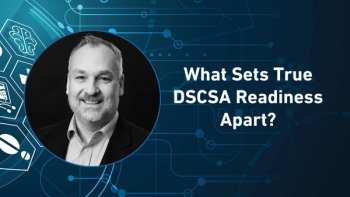
- Pharmaceutical Commerce - November/December 2015
For better patient data in pharma, think CUPID
A Common Universal Patient de-IDentifier could greatly enhance the value of industry data assets
The finance industry never ceases to amaze, with their fraud detection system and credit scoring backbone! Even though I buy wine every week with my American Express card, when I try to buy a bottle of wine in Tuscany, Italy—the fact that I have never been there and that I never buy a costly bottle of wine triggers an alert. As simple as it sounds, there is a well-oiled algorithm and solid data engine in that backbone. The key point is, all the different credit agencies compete with each other for securing the next customer, but then they work with each other in sharing the key data elements to elevate the industry to the next level.
Now, comparing that with the status of data in the pharmaceutical/biotech industry, we are light years behind the finance industry. As all of us work on the core mission of getting the right drug to the right patient, with less strain on navigating the complex healthcare system and leveraging the commonly available patient-level datasets for our analyses. Make no mistake, all these datasets are robust and have their own merits. Due to the data-hungry nature of our management science jobs, all life sciences firms buy several of these data assets, attempting to answer the key business questions.
The net result tends to follow the fable of the blindfolded men and the elephant—each man has a different impression, based on different data. The combination of these insights never present a picture close to reality.For instance, a claims analysis could create an insight that “20% of patients are under severe financial distress and may not be able to afford Drug A.” An EMR data asset could say “8% of the patients discontinued therapy with Drug A.” Even after spending several hundred thousand dollars, the most obvious question—“What portion of the 8% of patients that discontinued therapy with Drug A were a part of the 20% of the patients identified to have affordability issues?” cannot be answered. What is the reason? All these data assets have patient IDs (de-identified per HIPAA regulations) that are unique to the data supplier. Hence, the insight from one database cannot be coupled with the insight from another.
When this question is raised with data vendors, they always quote the HIPAA regulation as an obstacle. This prompted us to study the HIPAA regulations much more closely. In layman’s term, the regulation doesn’t prevent vendors from using a common de-identification; it just focuses on ensuring patient privacy and doesn’t prevent having a common ID across databases, as long as it is 100% de-identified with no possibility to re-identify the patients.
In this day and age, with the rising cost of healthcare and scarce resources, it is imperative that all marketing dollars available are optimized in the right way, helping patients with access to information and the right drugs. We at PMSA feel that data vendors have the responsibility to get the information interlinked, while ensuring compliance with the necessary laws and regulations.
Solution: an industry standard
Hence, our call to the pharmaceutical secondary-data industry is a Common Universal Patient de-IDentifier (CUPID). Sounds great, but where do we start? What does PMSA plan to do with this? Well, we at PMSA strongly believe that just one path or solution is not sufficient to tackle this issue. Hence, we are attempting the following:
- Alignment across data providers/aggregators: It is important that all the data providers align on this concept and at least agree to disagree on the key tenets of the solution. As a first step on this, PMSA is in the process of getting the key leaders from different data companies in the same room, for a day-long workshop to brainstorm the solution. The date and venue of the workshop is still in the works and we hope to finalize it by end of October.
- Creation of central consortium: As the key consumer of data and insights, we at PMSA would encourage setting up a central consortium, for providing linkable anonymization services to the industry. This might align well with the push for interoperable datasets across the healthcare industry!
- Assist with knowledge on linkage: With several pilots underway in different pharma companies, PMSA would be happy to offer advice and consultation to data science folks, attempting to link data assets for their projects.
You could also help by:
- Assisting with dialogue between data providers based on your day-to-day projects
- Connecting your internal data consumers and data providers for drafting out possible solutions
- Assisting with setting up a central consortium for patient anonymization.
There are solid examples where this has been successful in a small scale. Start somewhere and you will be impressed with the results!
The opinions expressed in this article are solely those of the author as PMSA vice president and not necessarily those of Genentech Inc. Genentech does not guarantee the accuracy or reliability of the information provided herein.
ABOUT THE AUTHOR
Karthikeyan Chidambaram is vice president of Pharmaceutical Management Science Assn. (
Articles in this issue
about 10 years ago
Who's the best in business-process outsourcing?about 10 years ago
PDI chooses Veeva's Network Customer Master solution for MDM managementabout 10 years ago
Zephyr Health introduces a new IT tool for product life-cycle managementabout 10 years ago
Transparency-reporting trends in Europeabout 10 years ago
GDUFA Fee Relief For Small Businessesabout 10 years ago
Dissecting the speed-to-therapy questionabout 10 years ago
AmerisourceBergen defines its path forward in traceabilityabout 10 years ago
Getting products to market fast with the 3PL Title Modelabout 10 years ago
2015 Cold Chain Forum: logistics refinements multiplyNewsletter
Stay ahead in the life sciences industry with Pharmaceutical Commerce, the latest news, trends, and strategies in drug distribution, commercialization, and market access.





